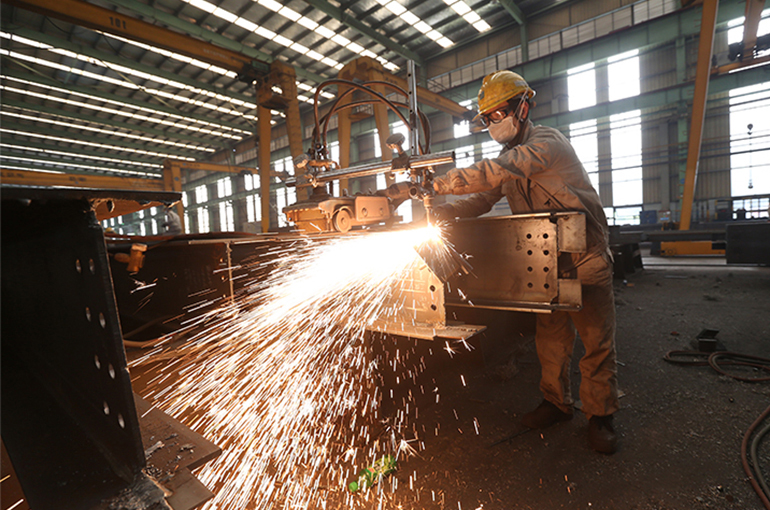 China's Factory Activity Contracts for Second Straight Month Amid Modest Uptick, Official PMI Shows
China's Factory Activity Contracts for Second Straight Month Amid Modest Uptick, Official PMI Shows(Yicai) June 3 -- Activity in China's manufacturing sector remained in contraction territory for the second month in a row in May, though the official figure climbed, indicating improving and stabilizing economic conditions.
The manufacturing purchasing managers' index came in at 49.5 last month, up from 49 in April, according to data released by the National Bureau of Statistics on May 31. The figure was 50.5 in March and 50.2 in February. A reading below 50 indicates contraction.
Production and demand grew in May, with the production and new orders sub-indexes climbing to 50.7 and 49.8 from 49.8 and 49.2, respectively. The new export orders sub-index jumped to 47.5 from 44.7, showing a rebound in market demand.
The rebound in manufacturing PMI last month shows that the implementation of a more proactive macroeconomic policy has begun to show its effects, said Zhang Liqun, a special analyst at the China Federation of Logistics & Purchasing. The production, purchasing volume, and new orders indexes all increased, indicating that business expectations are improving and signs of recovery in production and operational activities, Zhang added.
The PMI for large enterprises rose to 50.7 from 49.2. The major raw materials' purchase prices and ex-factory prices sub-indexes fell 0.1 point to 46.9 and 44.7, respectively.
The slight decline in price indexes highlights that an oversupply characterizes the market, and the macroeconomic imbalance caused by a contraction in demand has not yet changed, Zhang pointed out.
The 90-day suspension of some additional tariffs between China and the United States will help manufacturing production through an export rush, noted Wu Chaoming, chief economist of Hunan Chasing Financial Holdings. The short-term resurgence in overseas demand may drive a recovery in exports, Wu said.
The non-manufacturing PMI fell to 50.3 from 50.4 in May from the previous month, data from the NBS also showed. The composite PMI output index, which combines the production sub-index of the manufacturing PMI and the non-manufacturing PMI, climbed to 50.4 from 50.2, remaining in expansion territory since January 2023.
In the non-manufacturing sector, the civil engineering and construction industry is experiencing strong demand for new exports, while the water transportation industry also shows robust business activity. In addition, the business activity index and new orders index for telecommunications and internet/software services performed well.
The tariff agreement reached during the China-US Economic and Trade Meeting in Geneva last month has positively influenced related industries, leading to a concentrated demand release, said Wu Wei, an expert from the China Logistics Information Center. In addition, holiday consumption has had a significant impact on related sectors, Wu added.
The information services industry continues to grow and develop, providing a solid foundation for the ongoing recovery and positive performance of China's economy, according to Wu.
Editor: Martin Kadiev